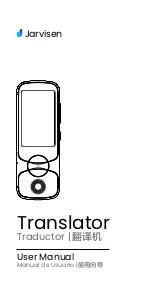
Global Parameters – Global Menu
Waldorf Q User’s Manual
138
•
If
On
is selected, all Sound Parameter Changes are received, no matter if they were sent as
controller or system exclusive messages.
���
Set
Controller Receive
to
On
during normal operation. You should only set it to
Off
for
diagnostic purpose.
Tuning |Transpose
440Hz | +00
Tuning
430…450 Hz
Controls the Q’s overall pitch in Hertz. The value specified here is the reference pitch for MIDI note
A3. The default setting is 440Hz, which is commonly used by most instruments.
You should only change this setting if you really know what you’re doing. You will have to
adjust all your other instruments, too. Don’t forget to set it back again!
Transpose
-12…+12
Allows to set a global pitch transpose for the keyboard and the tone generation. Transpose shifts the
keyboard by the number of semitones and therefore shifts the MIDI note messages that are sent. Also,
incoming MIDI notes are shifted by the number of semitones.
Clock
Internal / Send / Auto / Auto-Thru
Clock
Internal
Please read the chapter “The Tempo” on page 56 for deep information about the
Clock
parameter.
HMT Tune Mode
tempered / HMT tonal / HMT 3/5 / HMT 3/5ref / HMT 3/5/7 / Import
Tune Mode!HMT depth
tempered ! 000%
HMT tunes the Q dynamically to fit the music being performed. This leads to a warmer, more
pleasant sound, with clean highs and precise bass sounds. For deeper information about HMT please
refer to the chapter “The HMT function” on page 156.
The HMT function in the Q offers the following settings:
•
Tempered
is the normal default tuning used in most electronic instruments. HMT is not
active.
•
HMT tonal
tunes keys to different degrees of scaled tuning and delivers a “key signature
character”. When playing mostly white keys, c major will be the main focus and tuning
will be scaled to that chord. An A major chord that is played immediately after material in
C major (and is therefore subject to C major scaled tuning) will be affected somewhat by
the scaled tuning effect, but will not sound completely tempered. If you continue in A
major, the Q will recognise A major as the scaled tuning reference. The chord A major
then becomes the reference chord upon which the HTM alters that sound’s tuning. If you
normally play polyphonic music, this mode will sound pleasing to your ears. This mode
works best with lower tuning values.
Содержание Q Rack
Страница 1: ...User s Manual Q Keyboard Q Rack ...
Страница 170: ...Appendix MIDI Implementation Chart Waldorf Q User s Manual 170 ...
Страница 172: ......
Страница 173: ......
















































